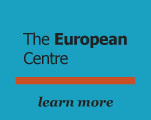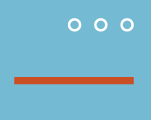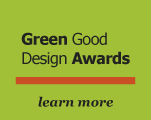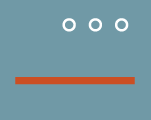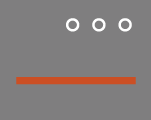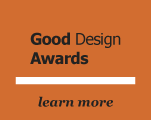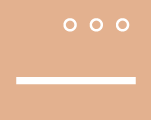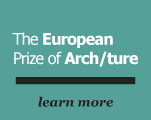Suad Amiry Tell a friend

Palestinian Architect Suad Amiry Wins The 2025 European Prize For Architecture
Suad Amiry’s brilliant and distinguished career as an architect and political activist is honored during the 2025 International Architecture Awards where she will be officially presented with “Europe’s Highest Award in Architecture” during “The City and the World” Athens Symposium and a dinner adjacent to the Acropolis on September 20.
Palestinian architect, scholar, political-social activist, dissident, teacher, peacemaker, conservationist, preservationist, and writer Suad Amiry has won the 2025 European Prize for Architecture from The Chicago Athenaeum: Museum of Architecture and Design and The European Center for Architecture Art Design and Urban Studies for her exhaustive research, advocacy, and heritage protection of historic buildings in Gaza and the Occupied West Bank in Palestine at a time when the world is witnessing one of most tragic episodes of cultural destruction, ethnic cleansing, and horrific genocide.
This year’s European Prize for Architecture has been bestowed upon two 2025 Laureates: Suad Amiry and Patrik Schmacher from Zaha Hadid Architecture.
“Spanning for more than three decades,” states Christian Narkiewicz-Laine, architecture critic and museum president of The Chicago Athenaeum, “Suad Amiry has been on a heroic mission to vigorously promote, protect, intervene, renovate, and restore cultural landmarks, monuments, and vernacular architecture throughout the State of Palestine.”
“Since 1991 and as the founder and director of the Palestinian not-for-profit Riwaq Centre for Architectural Conservation based in Ramallah, she has been responsible for cataloguing thousands of historic structures in cities, villages, and rural areas and for the restoration and rehabilitation of hundreds of key cultural monuments and landmarks throughout the West Bank and the Gaza strip.”
In Arabic, “riwaq” refers to an arcade, portico, or covered walkway in traditional Islamic structures.
“In her mission to preserve Palestinian architecture, she has focused on the challenging complexities of preserving Palestinian collective memory through projects that document and restore architectural heritage sites across Palestine.”
“Through initiatives such as the ‘50-Village Rehabilitation Project’ and the ’Life Jacket Project,’ the Riwaq Centre has turned the field of heritage into a medium of thinking of urgent and emergent socio-economic-cultural-political concerns."
“In her work, she places residents and users at the center of design and preserves buildings that are both frugal and generous, but with the end-product advocating for a national identity and a complete architectural history of the Palestinian State.”
“Her work exemplifies the recognition that traditional and vernacular architecture is the highest form of indigenous human spiritual creation and consciousness.”
“For Ms. Amiry, the Palestinian identity is as much about the individual as it is about the collective sense of belonging to a place.”
“She believes that using architecture to forge community inspires compassion and elevates the human spirit.”
"In light of the continuing and increasing violence and destruction in Palestine,” continues Narkiewicz-Laine, “Suad Amiry’s life-long commitment to the restoration and reuse of historical Palestinian structures is vital as a condemnation of the current demolition of madness in this horrific War in Gaza and the savage brutality of ethnic cleansing currently unfolding throughout Palestine, including the Occupied West Bank.”
“Her relentless, three decades of work sends an urgent, but tragic message to the world at large and to all architects and politicians that the destruction of Palestine, which has been and continues to be supported and funded by the United States and most of Western Europe, is one of the darkest and most appalling moments of our time, our civilization, and our human history.”
“She once stated: ‘Israel tore down nearly 400 historic centers during the Nakba, hence I will reclaim, document, and rehabilitate another 400 throughout the West Bank, Gaza, and Jerusalem’.”
“Ms. Amiry’s work exemplifies a pattern that can be observed in many prominent Palestinian figures: a disposition towards life, a multiplicity, and an adaptability that withstands the rapidly splintering world.”
“It is in that honorable, defiant legacy that her work and her vision demonstrate how entire worlds can be recreated and resurrected out of rubble."
“Her mission upholds the transcendent power of architecture, while understanding that both are a product of community, spirituality, tradition, and the preexisting.”
“Her work is the enactment of ‘sumud’—the Arabic term for Palestinian cultural value, ideological theme, and political strategy that emerged in the wake of the 1967 Six-Day War against the Arabs and the Palestinian people,” concludes Narkiewicz-Laine.
“This is architecture as cultural resistance; and against all odds, Ms. Amiry is an absolute hero of profound proportion.”
Each year, The European Prize for Architecture is awarded jointly by The European Centre for Architecture Art Design and Urban Studies and The Chicago Athenaeum: Museum of Architecture and Design to architects who have made a commitment to forward the principles of European humanism and the art of architecture.
The European Prize for Architecture is not a “lifetime of achievement award,” but rather serves as an impetus to support new ideas, to encourage and foster more challenge-making and forward-thinking about buildings and the environment, and to prompt the pushing of the envelope to obtain an even greater, more profound result.
The Prize also honors the commitment and achievements of the best European architects who have determined a more critical, intellectual, and artistic approach to the design of buildings and cities.
Previous Laureates include: Bjarke Ingels (Denmark), Graft Architects (Germany), TYIN Architects (Norway), Marco Casagrande (Finland), Alessandro Mendini (Italy), Santiago Calatrava (Spain/Switzerland), LAVA Laboratory for Visionary Architecture (Germany), Manuelle Gautrand (France), Sergei Tchoban (Russia/Germany), Henning Larsen Architects (Denmark), Wolfgang Tschapeller (Austria), Francine Houben and Dick van Gameren of the Dutch firm Mecanoo (The Netherlands), Christoph Ingenhoven (Germany), and Ayse Mücella Yapici, Tayfun Kahraman, and Can Atalay–three imprisoned Turkish architects and champions of human rights.
Last year, the European Prize for Architecture was given to the Austrian architecture office of querkraft architektur.
Suad Amiry was born in 1951 in Damascus, Syria, as a refugee during the massacres of the Nakba and as part of the Palestinian diaspora that fled to neighboring countries. Her parents then relocated to Amman, Jordan, and she was subsequently brought up in Beirut.
She studied architecture at the American University of Beirut, and later at the University of Michigan and the University of Edinburgh, Scotland.
She became a member of the teaching staff at Birzeit University in the Occupied West Bank of Palestine until 1991, after which she left the university to found and lead the Riwaq Centre for Architectural Conservation in Ramallah.
Ms. Amiry was also a member of the Palestinian delegation to the Israeli-Palestinian peace negotiations in Washington, D.C. from 1991 to 1993. She then held several senior positions within the Palestinian Ministry of Culture; and in 2006, she was appointed vice-chair of the Board of Trustees of Birzeit University.
She has written and published books on Palestinian architecture, including: Space, Kinship and Gender: The Social Dimension of Peasant Architecture in Palestine for the University of Edinburgh Press (1987); The Palestinian Village Home for British Museum Press (1989); Traditional Floor Tiles in Palestine for the Riwag Centre (2000); and Earthquake in April (2002).
Ms. Amiry is a prolific writer, having authored award-winning books including Sharon and My Mother-in-Law: Ramallah Diaries (2003), which has been translated into 19 languages, and which became a bestseller in France and was awarded in 2004 with the prestigious Viareggio Prize in Italy, together with Italo-Israeli Manuela Dviri. Most recently, she authored Mother of Strangers (2022).
In 2013, she received the Aga Khan Award for Architecture for the Revitalization of Birzeit Historic Center with Riwaq.
In 2025, she was awarded the Ada Louise Huxtable Prize for Contribution to Architecture by the Architectural Review.
Currently, she continues to work and reside in Ramallah and in New York, prioritizing the everyday lives of her fellow Palestinians.
However, it was Ms. Amiry’s founding of the Riwaq Center in 1991 and her work in preserving Palestinian landmarks and vernacular architecture that brought her into the global spotlight.
One of the first projects under Ms. Amiry’s direction was the compilation of a registry and architectural survey of buildings of significant historical value in Palestine’s Occupied West Bank and Gaza.
Armed with a diverse team of students, architects, archaeologists and historians, Ms. Amiry’s project was launched in 1994 and resulted in the publication of Riwaq’s “Registry of Historic Buildings,” which was completed in 2006.
The Registry lists over 50,230 historic buildings, with half of which were abandoned across 16 cities and 406 villages, along with the publication of three volumes that included their detailed histories, maps, and photographs.
The project also revealed that almost 50% of those historic buildings in rural areas of the West Bank and Gaza are located in or around 50 villages.
“But even if Ms. Amiry's dream had already been partially achieved, Riwaq's ambitions were, again, much bigger,” Narkiewicz-Laine continues.
In 2005, Riwaq then launched the “50-Village Rehabilitation Project,” restoring public spaces and assisting local villagers to renovate their own properties.
Hence, it became Riwaq’s vision to focus on those 50 villages for the foreseeable future, working on rehabilitation projects to target improvement of services, infrastructure, and living conditions of the public and private surrounding spaces.
At a time when Palestine was facing setbacks in the political and economic spheres, Riwaq’s “50-Villages” project endeavored to make a qualitative addition on the regional scale.
Empowering communities by offering means to improve their environment and living conditions implies responding to the urgent issues Palestinian’s face daily.
Riwaq also undertook important restoration work on the so-called “throne villages” (qura al-karasi), the centres of Ottoman tax districts.
The “50-Villages” project became a tool to reconstruct an alternative Palestinian map, a conceptual shift that moves away from a conventional restorative approach—that is, conservation and documentation of single buildings—into exploring the wider urban context while protecting its heritage.
The project is embedded in a conscious approach to explore what could be done with limited resources, and to cultivate possibilities for change from within Palestinian historic fabrics.
This process of re-reading the map has given birth to new cooperative matrices and networks that are working together to stitch Palestine’s fragmented landscape.
Heritage architecture, in this sense, is no longer seen as a passive act rooted in romantic values as is common in many countries, but rather in a dynamic form of enacting change.
The concept and definition of heritage have gradually advanced, opening up possibilities for new understandings of urban spaces, buildings, and individuals.
These possibilities embrace contemporary activities, meanings, and practices that one can draw from the past to shape the future.
In 2007, the first major projects led by the Riwag Centre evolved: The "Revitalization of Birzeit Historic Centre," a major, comprehensive project to restore the historic core of Birzeit, Palestine, transforming it into a vibrant cultural and socio-economic hub through community-involved, sustainable conservation of buildings and public spaces as a pilot scheme for Riwaq’s “50-Villages” vision.
The project addresses the historical abandonment of the center following the 1967 war and Birzeit University's 1980s campus relocation. It utilizes traditional materials and techniques, incorporates new elements in a contemporary style where needed, and aims to revive vanishing crafts, create jobs, and establish a model for rehabilitating other Palestinian villages.
This five-year project, part of a rehabilitation master plan, has transformed the decaying town of Birzeit, created employment through conservation, and revived vanishing traditional crafts in the process.
Community involvement was encouraged from the start, including local NGOs, the private sector, owners, tenants and users, all working with the municipality.
Both historic buildings and public spaces have been rehabilitated into community activity hubs. Replaced sections of wall remain distinguishable from the original structures, without harming architectural coherence.
Lost features were replaced where there was clear evidence for their former appearance, such as floor tiles with Palestinian motifs.
Affordable traditional techniques and local materials were used throughout.
Where no historical models were available, new elements were made in a bold contemporary spirit.
In 2015, The Riwaq Centre launched “The Life Jacket: The Restoration and Regeneration of Rural Jerusalem” to address the geopolitical challenges that Jerusalem has had to endure, including separation, dispersal, and marginalization.
In “The Life Jacket” project, Riwaq proposed creative attempts that invest the social and economic potential of the rural villages of Jerusalem, in order to contribute to the steadfastness of Palestinians in their lands and to resist the attempts of fragmentation and separation of Jerusalem from its natural incubator, the rural areas.
Such surrounding villages—such as Al Jib, Kafr ‘Aqab, Qalandiya, Beit Iksa—used to have a strong connection between themselves and with the city of Jerusalem. But things were completely overturned by the Separation Wall in 2002.
The wall not only changed the physicality of the spaces, but also their demography and economic situation of the Palestinian people, when such industries as agriculture, crafts, and local industries disappeared completely.
Riwaq’s “The Life Jacket” project has aimed to reclaim these spaces, bringing communities together and encouraging farmers and pottery-makers to connect the historic centers to their original functions. The aim is not to just renovate, but to build strong community-based organizations. Therefore, this project will have continuity and future evolution.
In the village of Al Jib, nine kilometers from Jerusalem, Riwaq has put a lot of effort into rehabilitating this historic center; a process that is still ongoing, with its vast number of ancient buildings and archaeological sites spanning throughout centuries.
“Today, with the continuing war and genocide in Gaza and violence and tension rising in both the West Bank and Jerusalem, states Narkiewicz-Laine, “it is not easy for Ms. Amiry and the Riwaq’s team to stay focused.
“However, Ms. Amiry clearly understands that her work directly contributes to the enforcement of Palestinian human rights and identity; and, implicitly, she is endorsing the Palestinian struggle, too.”
“In this way, it is clear that Riwaq is not just a pillar of Islamic architecture, or an independent organization that fully rehabilitates historical heritage, but also a tool for cultural resistance during this current genocide, ethnic cleansing, and horrific era of near annihilation.”
Suad Amiry is the 22nd Laureate of the European Prize for Architecture.
The formal ceremony and gala dinner for what has come to be known throughout the world as Europe’s highest honor for architecture will be held at a Gala Dinner at the foot of the Acropolis in Athens, Greece—the birthplace of Western Architecture—on Saturday, September 20, 2025.
An exhibition “Suad Amiry” opens at The European Centre (74 Mitropoleos Street) in Athens that same evening.
About The European Centre for Architecture Art Design and Urban Studies (www.europeanarch. eu) is dedicated to public education concerning all aspects of the built environment - from entire cities to individual buildings - including the philosophical issues of arts and culture that ultimately give the final shape to design. A high emphasis exists on contemporary values and aesthetics, conservation and sustainability, and the theoretical exploration and advancement of art and design as the highest expression of culture and urbanism.
About The Chicago Athenaeum (www.chi-athenaeum.org) is a global nonprofit education and research institute supported by its members. Its mission is to provide public education about the significance of architecture and design and how those disciplines can have a positive effect on the human environment.
EUROPEAN PRIZE FOR ARCHITECTURE® is a Federally Registered and Protected U.S. Trademark of The Chicago Athenaeum. Copyright © 2021.

